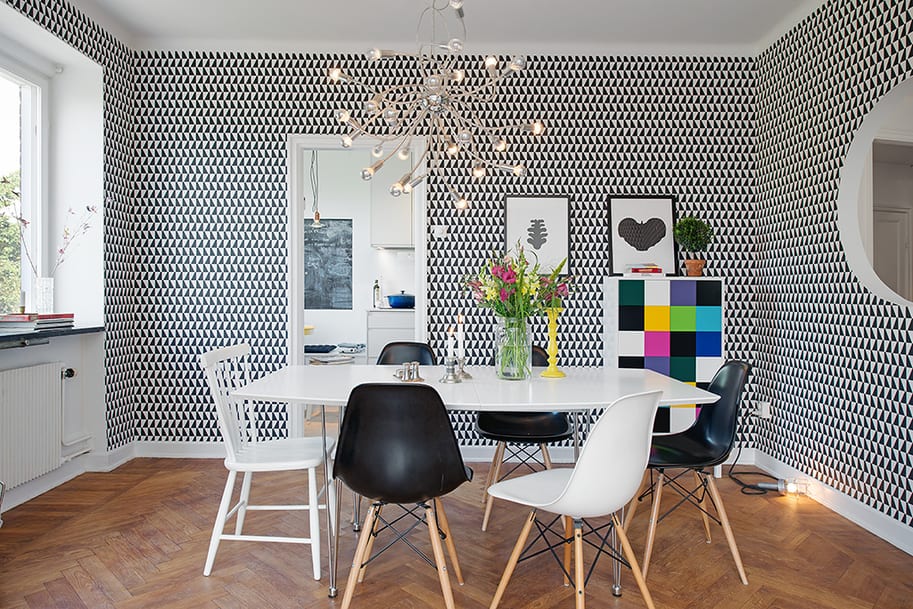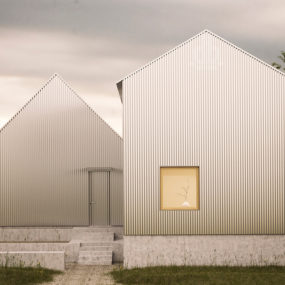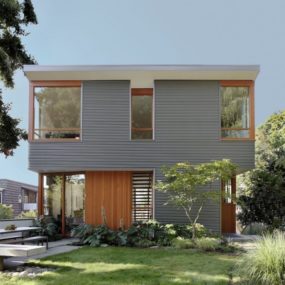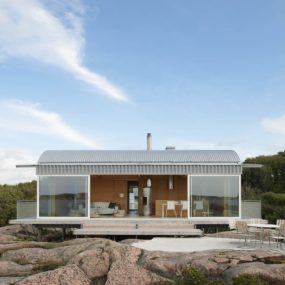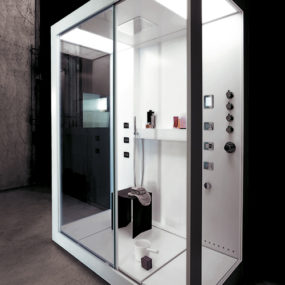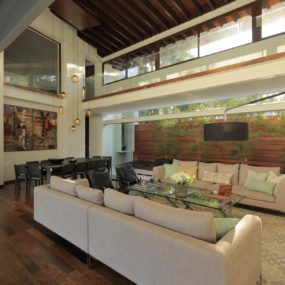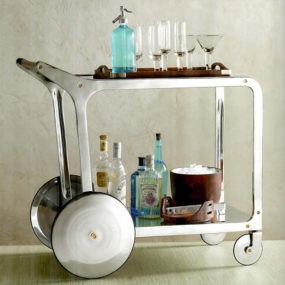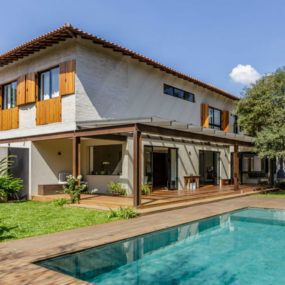Landscape House by Mabire-Reich is located on a ridge of the Armorican Massif in Nantes, France. The owner’s expanding family meant that they either needed to move or build an extension onto their 1930s home and since they loved their property, already having invested several years into the garden landscaping, they decided to design an extension that would work with the original home and with the existing garden areas. The finished extension touches the original home in one corner before extending out and around a garden area. The facade is clad in corrugated aluminum siding and wood window details, completely different from the original home, creating a modern contrast not meant to merge with the 1930s style.

Since outdoor living was important to the family, the extension features a roof that includes a series of terraces and ramps with views towards the nearby Loire valley.

From the street the new extension extends out on the same line as the original home, both very close to the privacy fence.

Although the main level of the extension is wrapped in glazings, only the top part of the windows are visible above the fence.
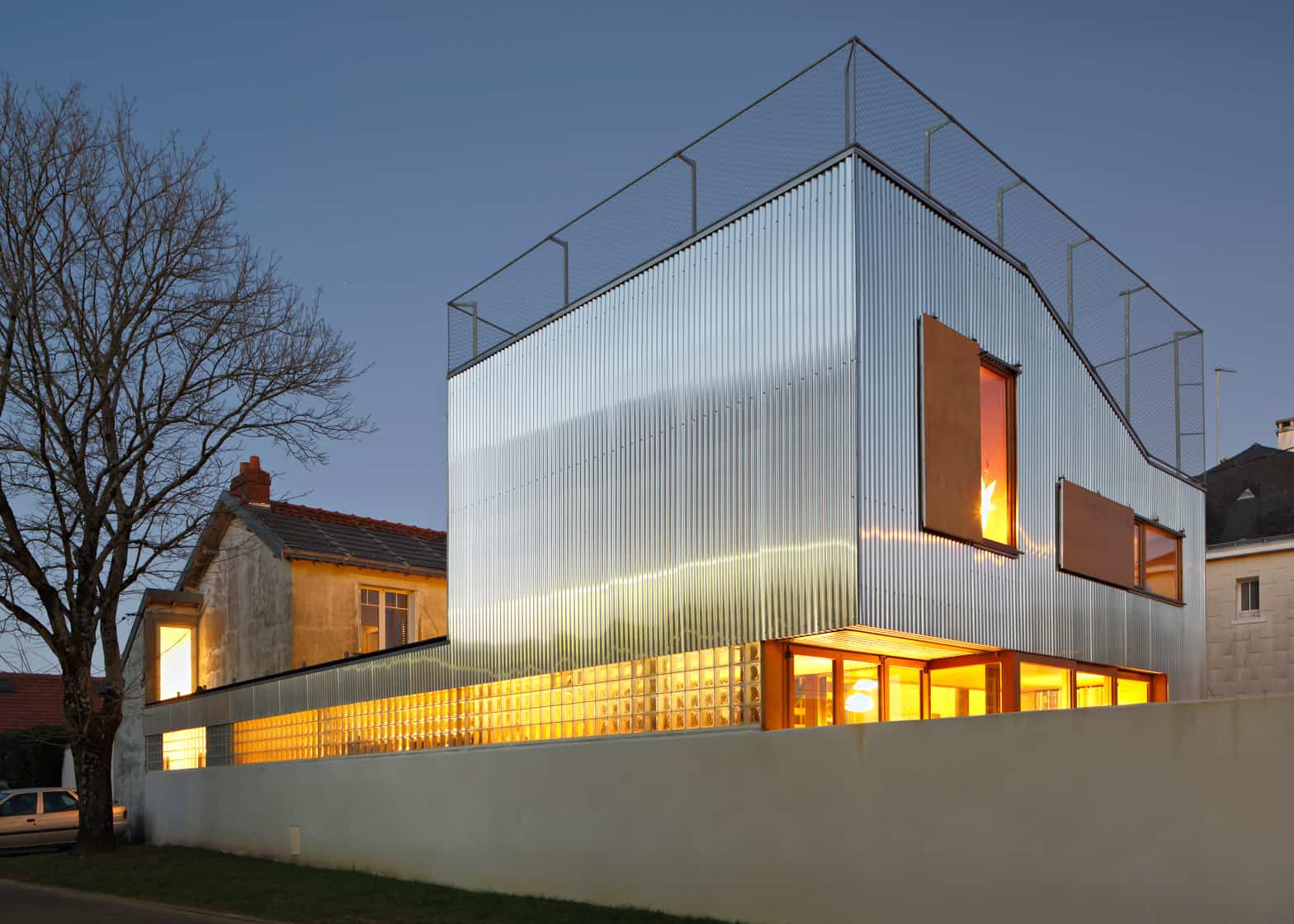
The design of the extension is based on creating a completely separate building, attached and yet not. The two different styles of architecture continue that theme.
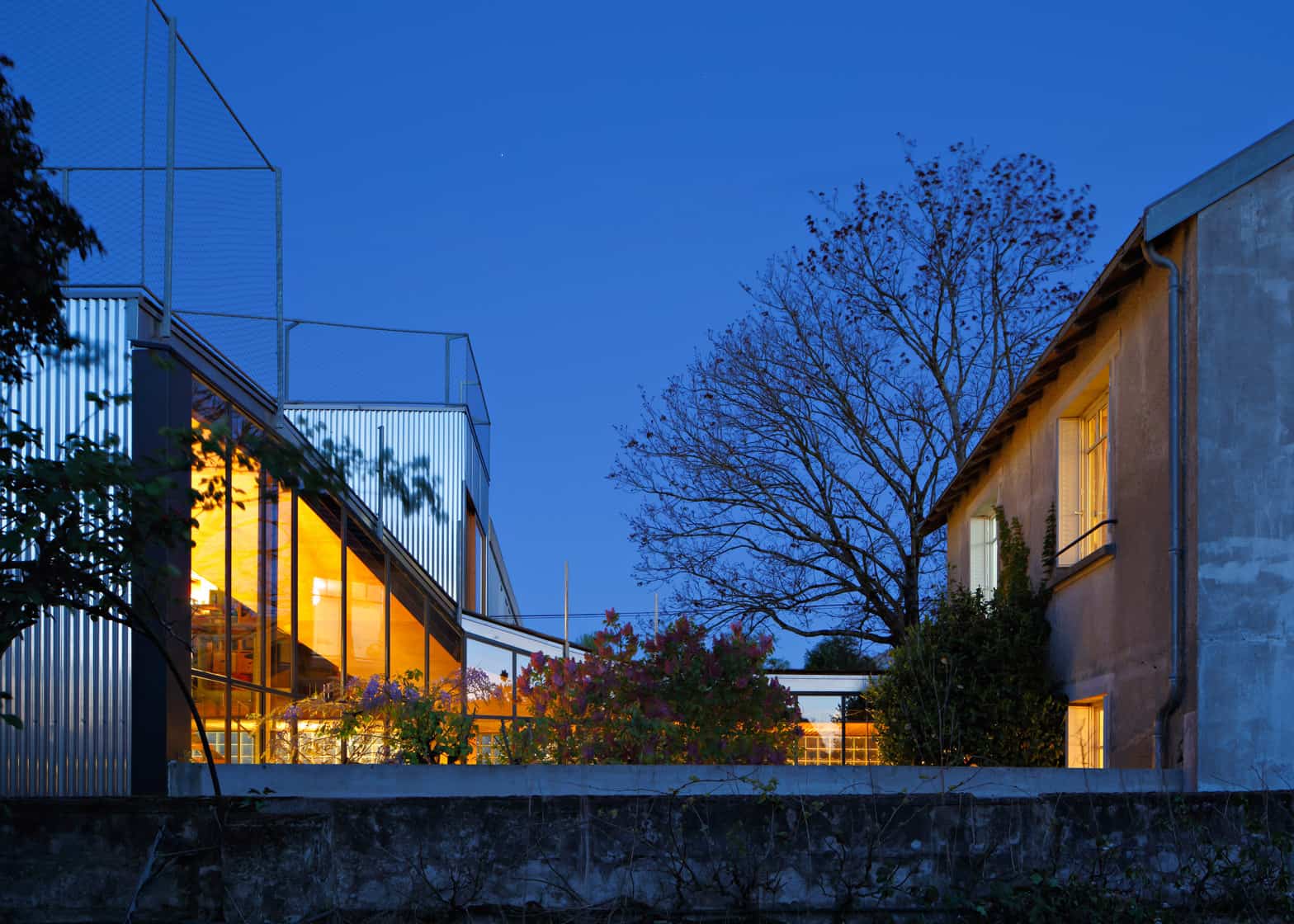
The new structure touches the existing home on one corner and as is separates, it wraps around a courtyard with a mature wisteria, lilac and pear tree growing in it.
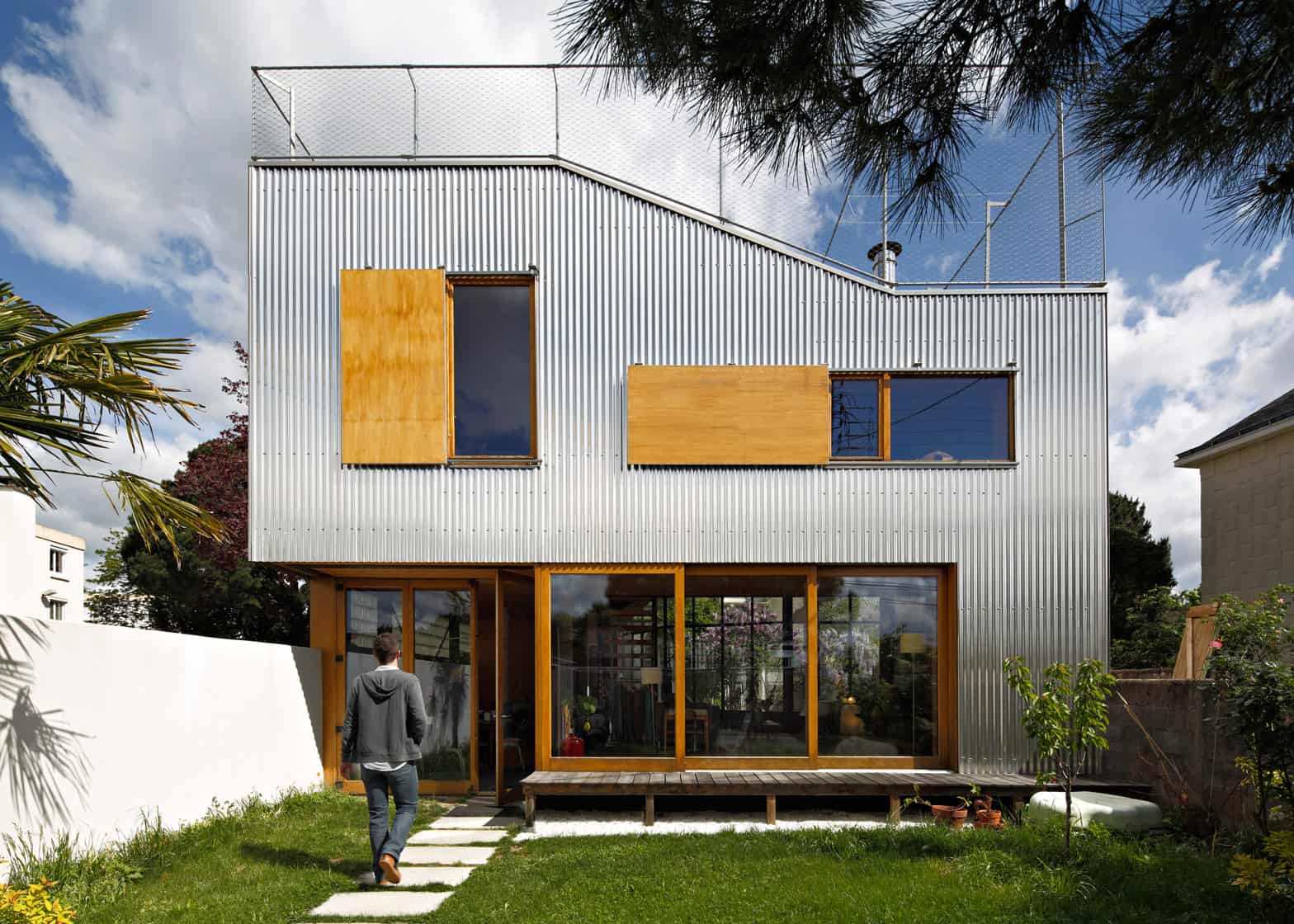
The back of the extension enters and exists from the garden via a door positioned next to a pair of sliding glass doors that when open create a merging of indoor and outdoor spaces.
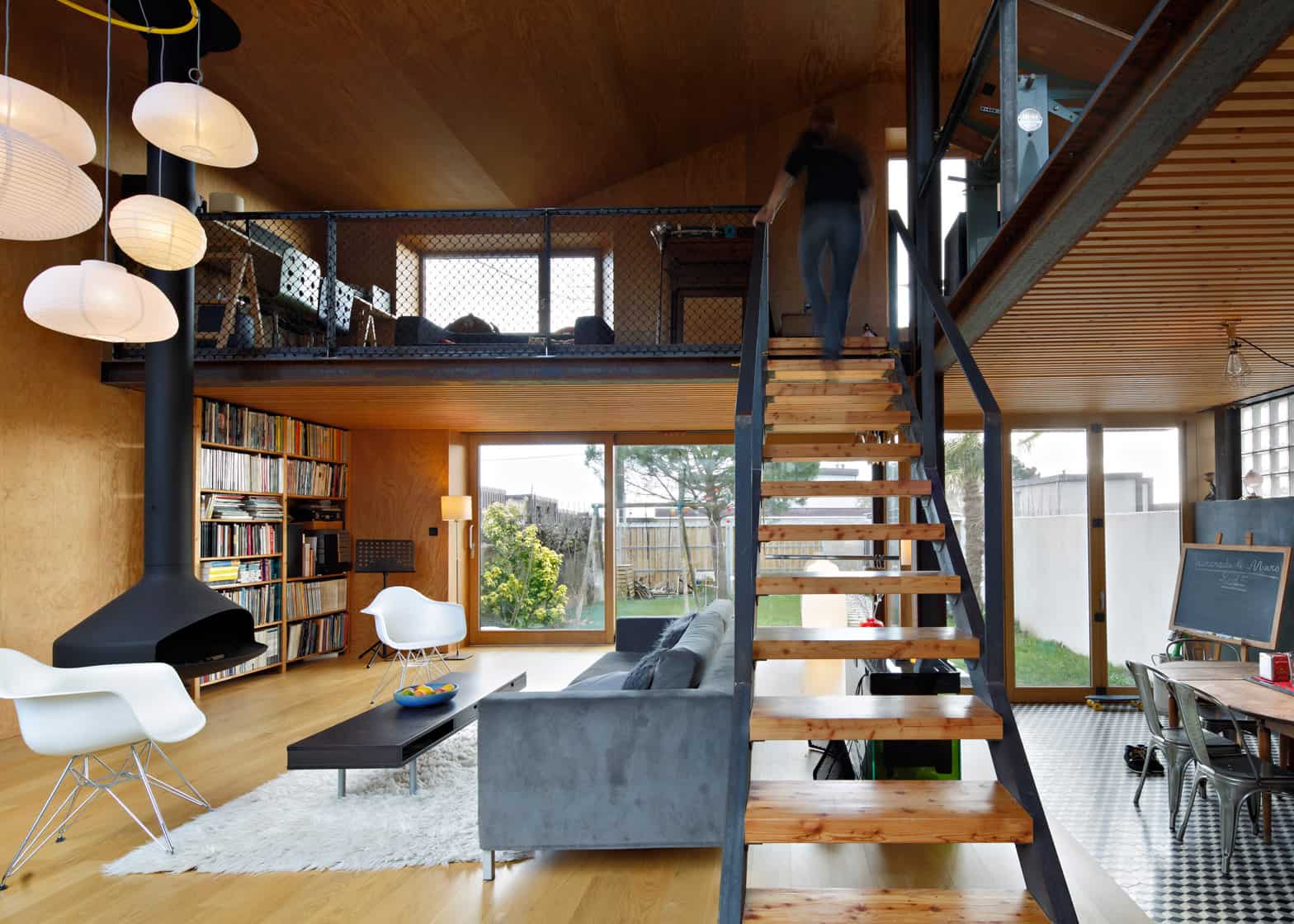
Inside the backdoor a family room doubles as a library. Kept cozy by the all-wood interior, the extension is also kept warm by a suspended fireplace.
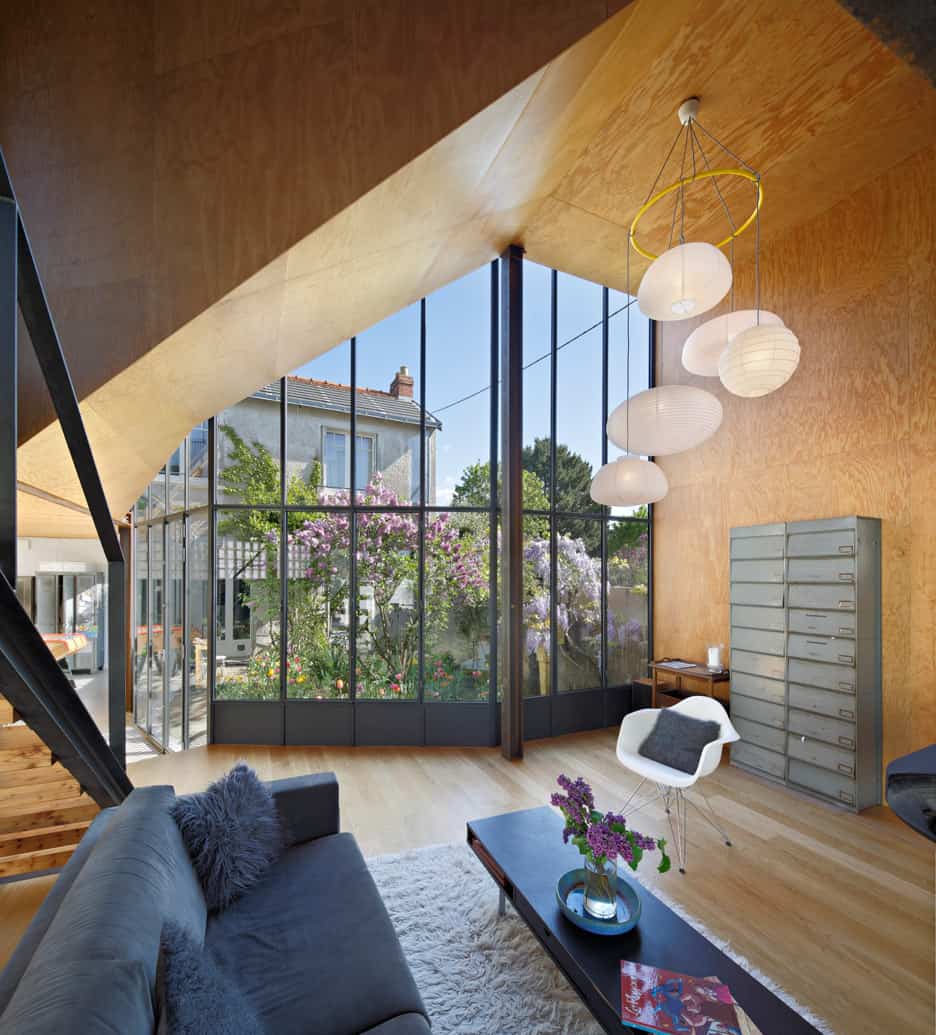
The library area opens up to a double volume space clad from floor to ceiling in glass with a beautiful view of the 1930s home on the other side of the wisteria / lilac / pear courtyard.
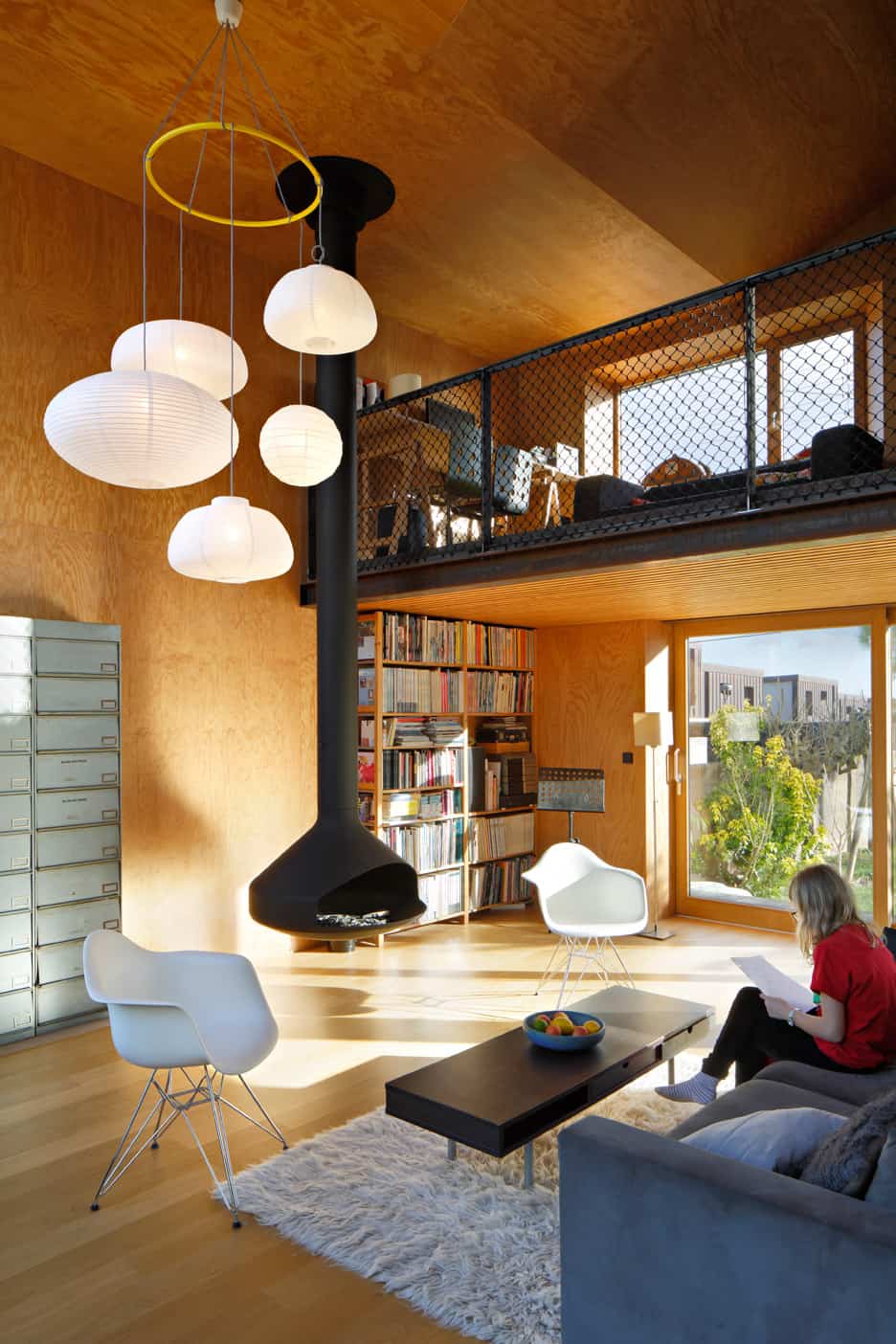
The owner’s home office is located above the library area. With the office open to the double volume space the owners can keep connected to their family while working upstairs.
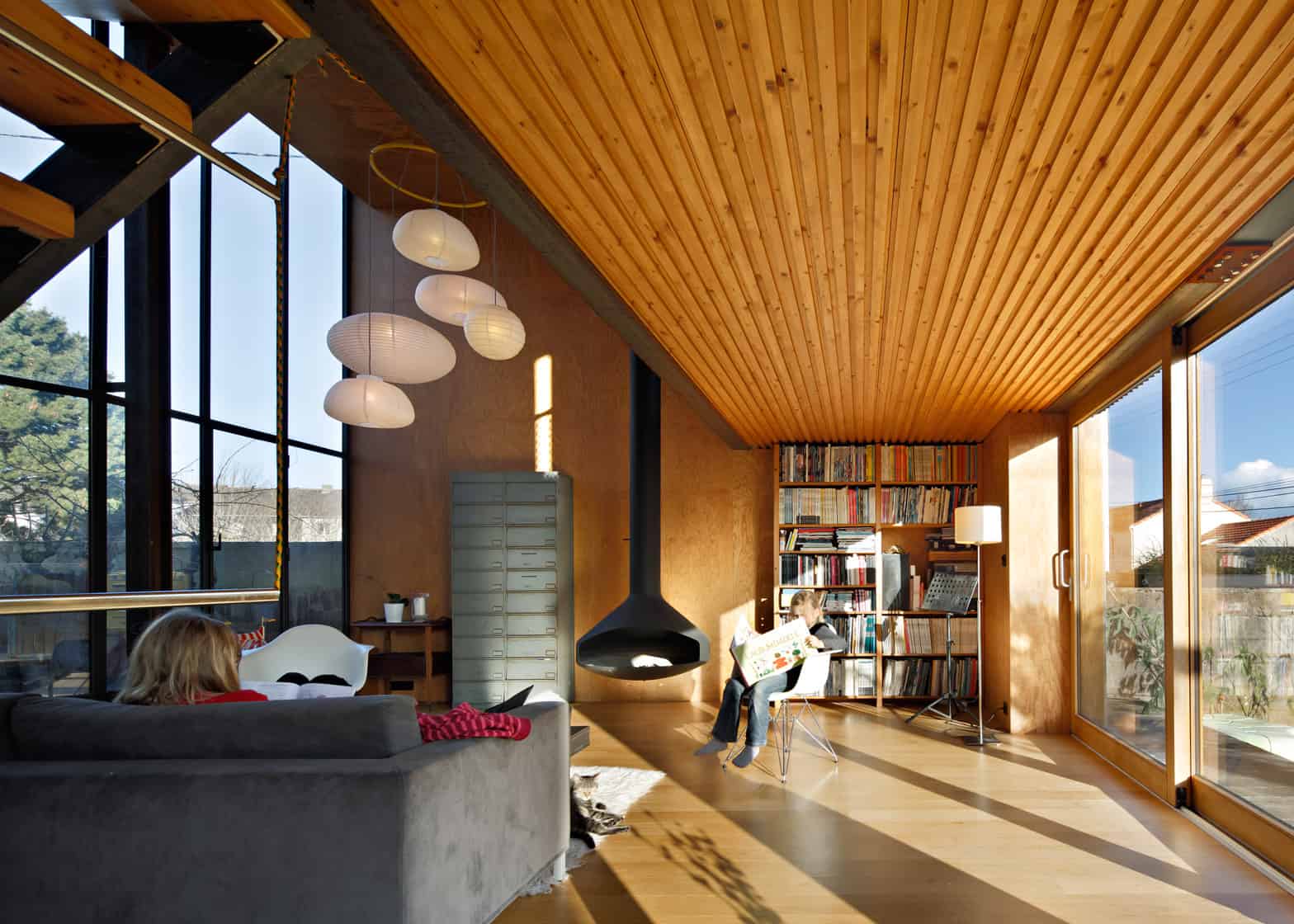
There are no doors within the interior of the extension, rooms meld and merge uninterrupted by door frames and it is only the change in ceiling and floor levels that define each space.
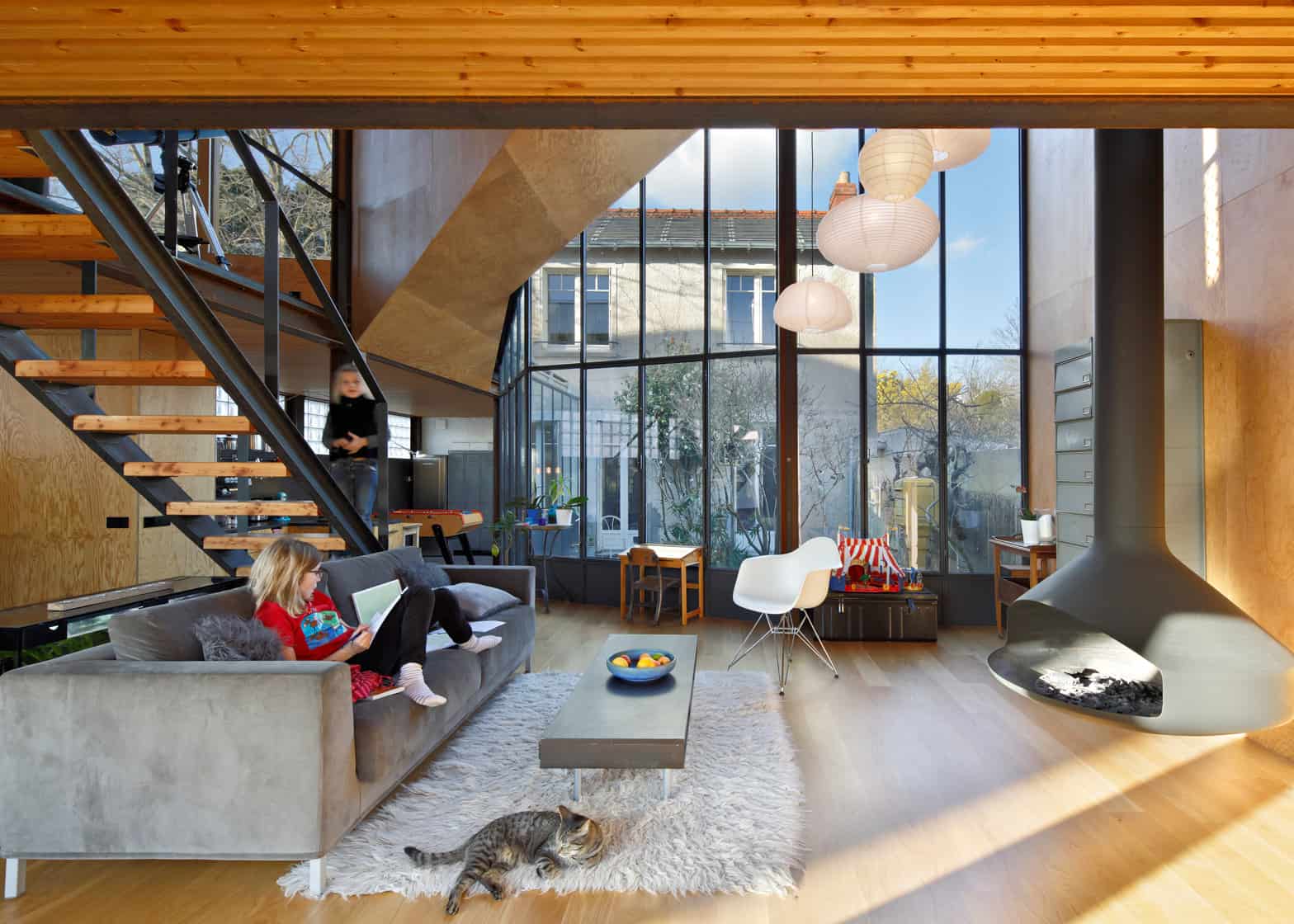
The double volume window slowly drops in height to become the length of glass within the corridor that connects the extension to the original home and the first zone within the courtyard is a Foosball station.
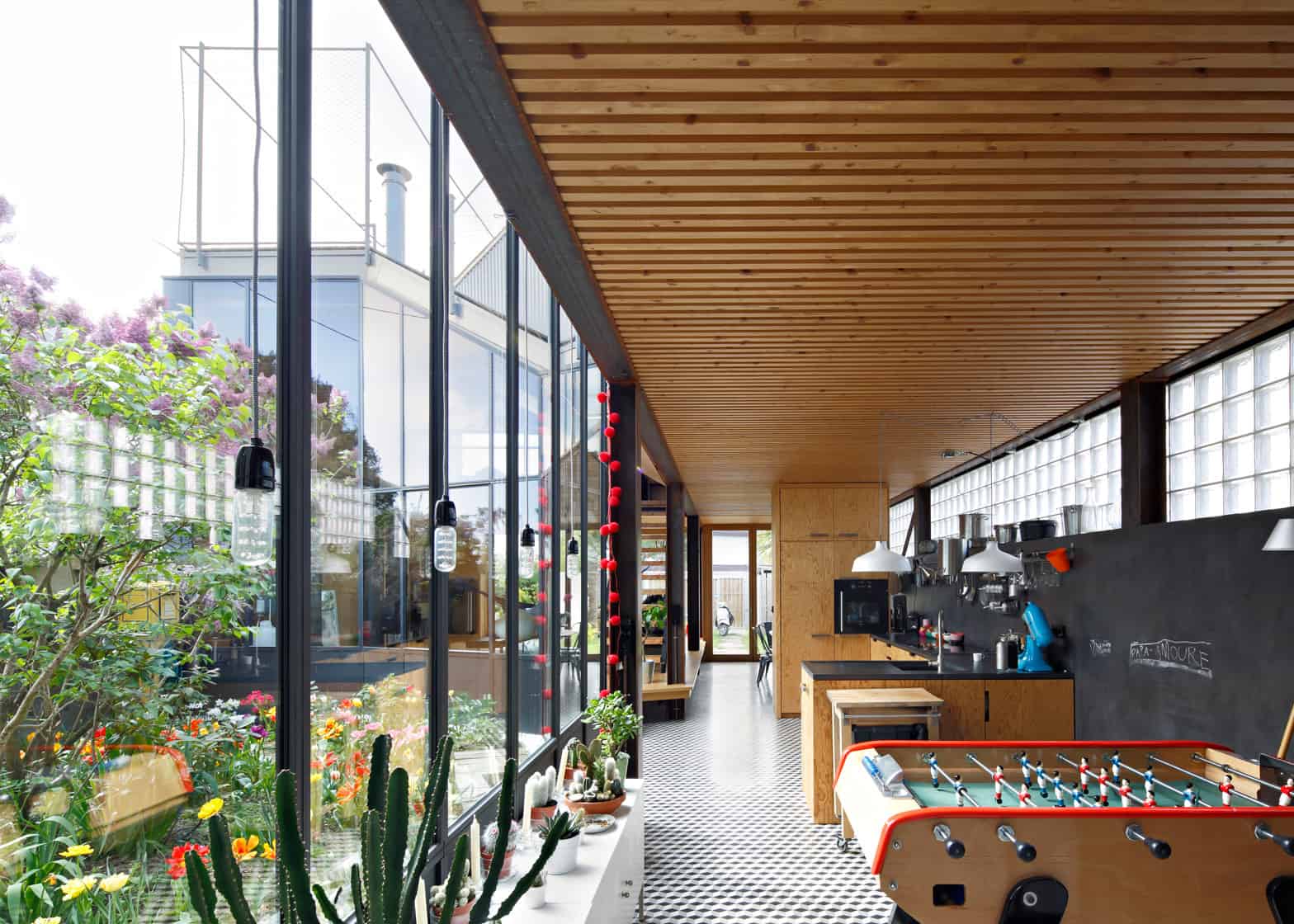
The Foosball stand blends with the rest of the wood clad interior making it as much a piece of furniture as it is a piece of fun.
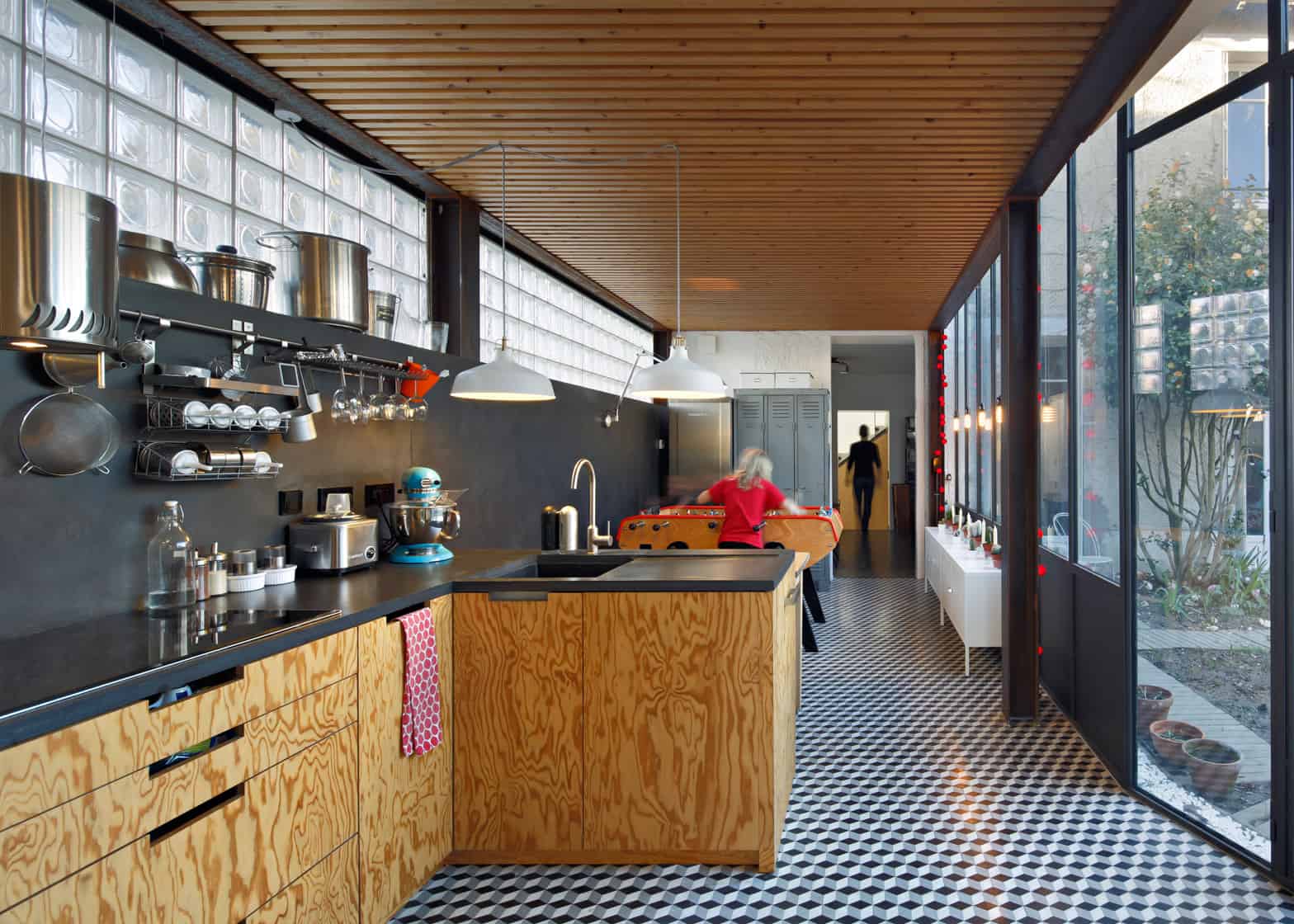
Just past the Foosball table and centered within the corridor is the kitchen sporting a short peninsula on either side. The kitchen and the Foosball station share a chalkboard wall for keeping score on the game or on the ingredients to an upcoming meal.

The corridor ends where the extension joins up with the original home. Not only does the contemporary finishing in the extension get replaced with a more traditional interior decor but so too does the open floor plan get replaced with smaller, more defined spaces that include actual doors.
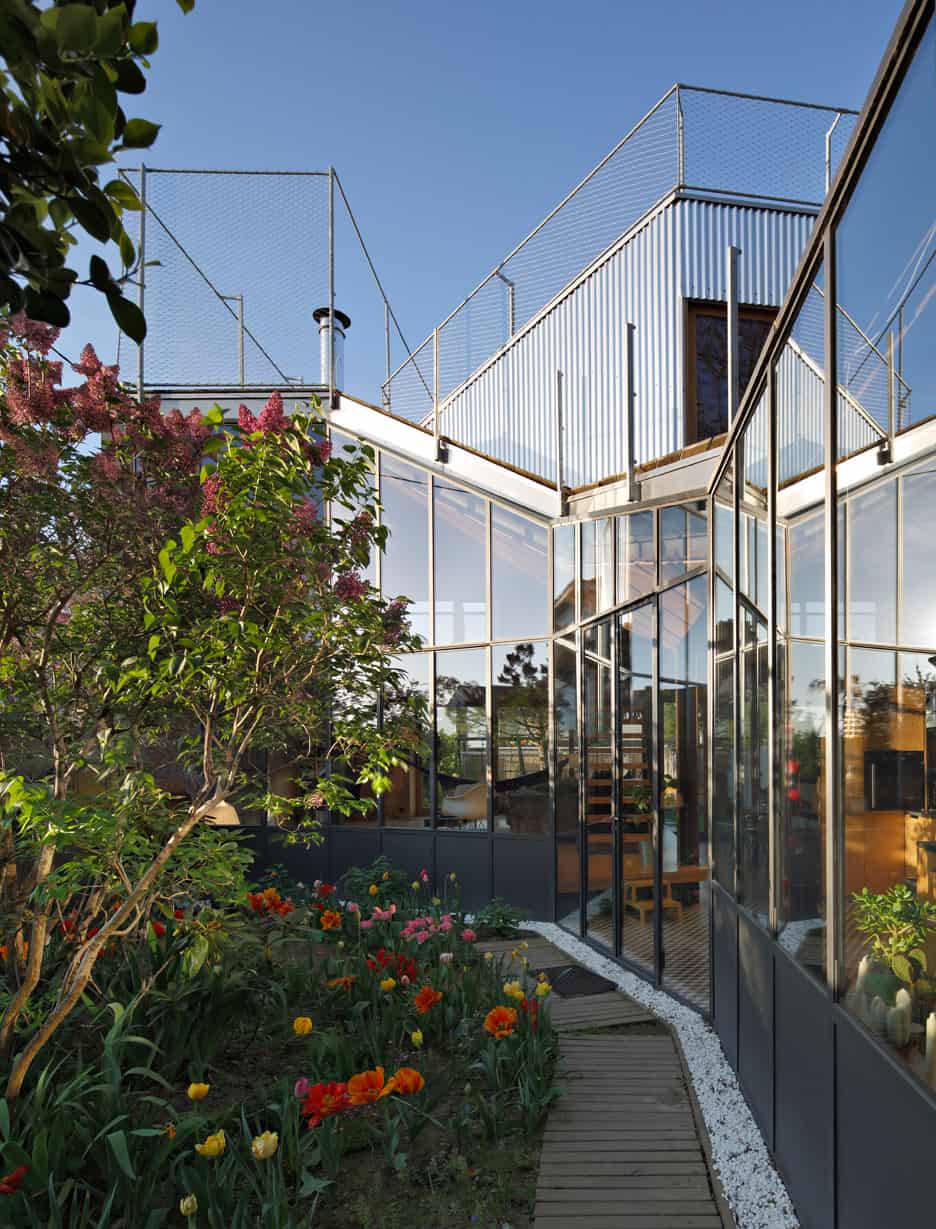
The journey along the extension corridor is a beautiful one that changes with each new season of flowers and while the journey inside is completely exposed to the garden, a wood plank path on the outside of the extension is a much more up close and personal trip around the landscaped courtyard.
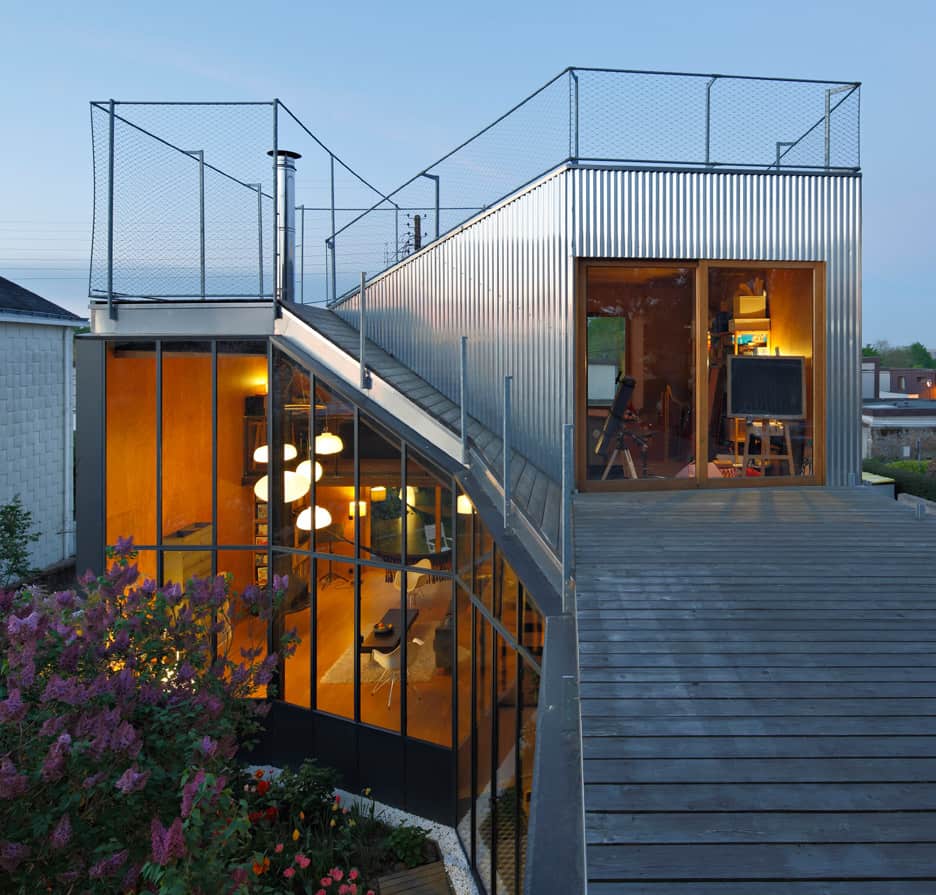
Another area that travels along the courtyard is the roof terrace above the corridor. This terrace connects up with the children’s playroom which is just down the mezzanine hallway from the loft style home office.
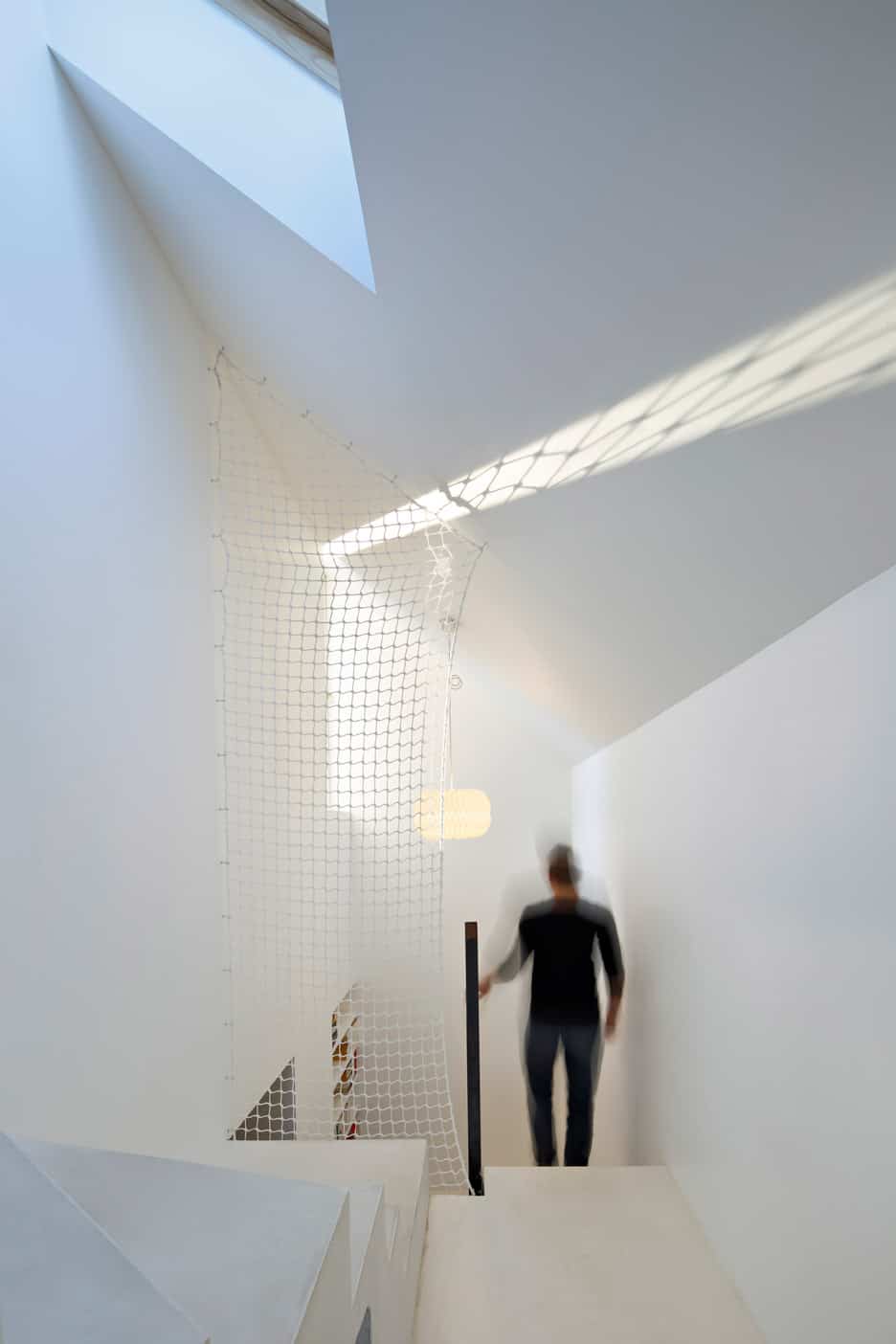
Access to the roof terrace from the main house is via an all white stairwell with netting as a safety rail.

There is also a newly renovated bathroom next to the stairwell on the 2nd storey section within the original structure.

The roof terrace has a ramp on the side that travels up to an even higher rooftop terrace and for safety protection the ramp is wrapped in aluminum piping as a safety rail that matches the aluminum siding on the structure.
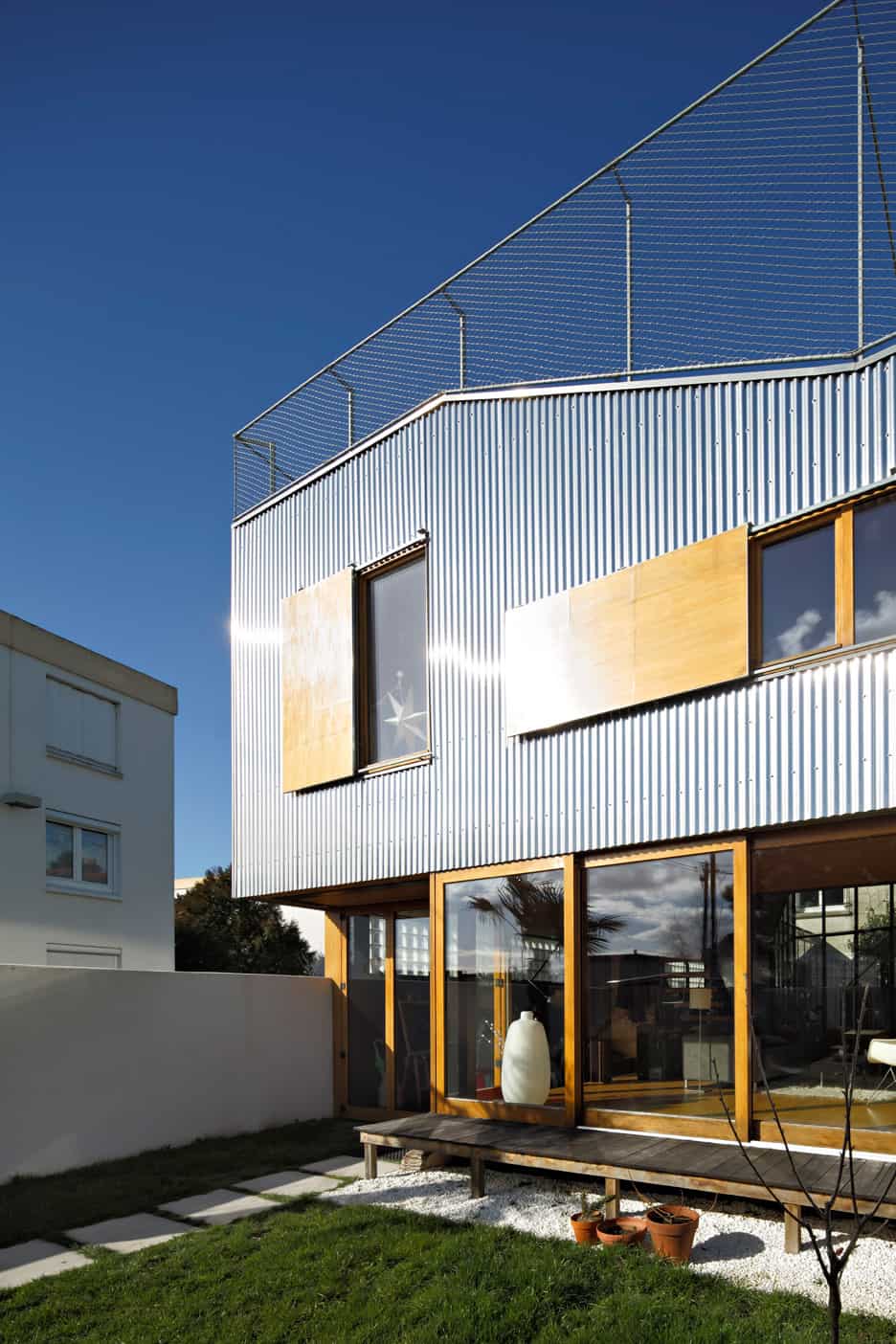
Chain link fencing fills the voids between the aluminum pipes on the safety rail.
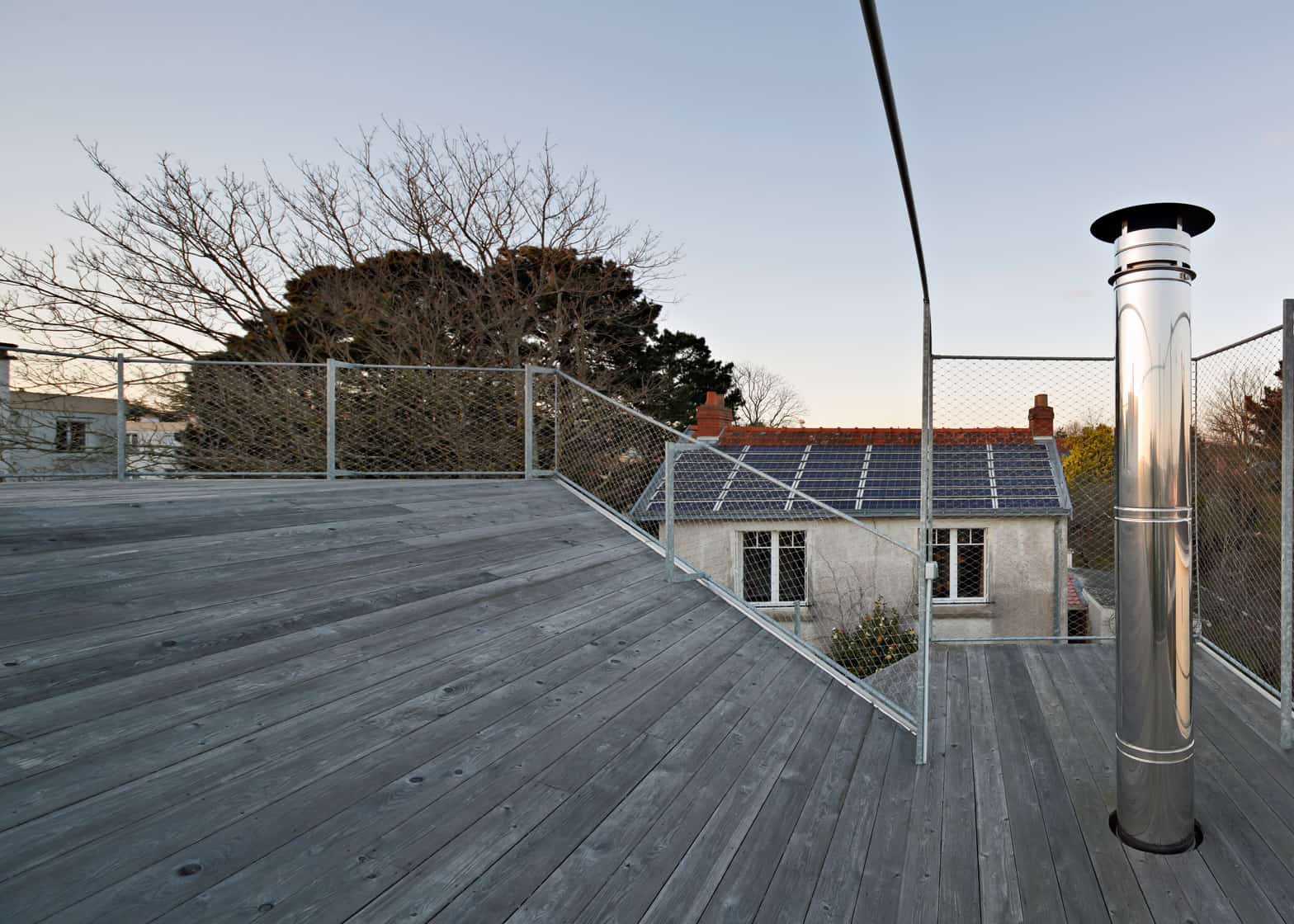
The roof top terrace is completely clad in naturally weathered wood decking.
Architectural plans below:




Mabire-Reich.
Photography by Guillaume Satre.
Designing an extension to a pre-existing home gives architects an opportunity to think outside the box and create a unique structure that compliments the original home without duplicating its style or use of materials. It’s always fun when architects come up with a unique design such as a concrete tree house like addition or an asymmetrical roofline paired with the traditional pitched roofline.
